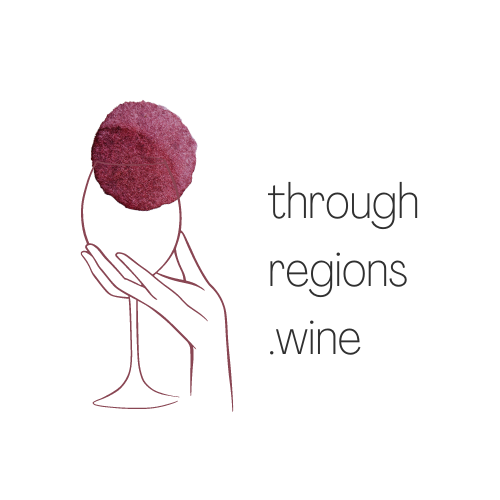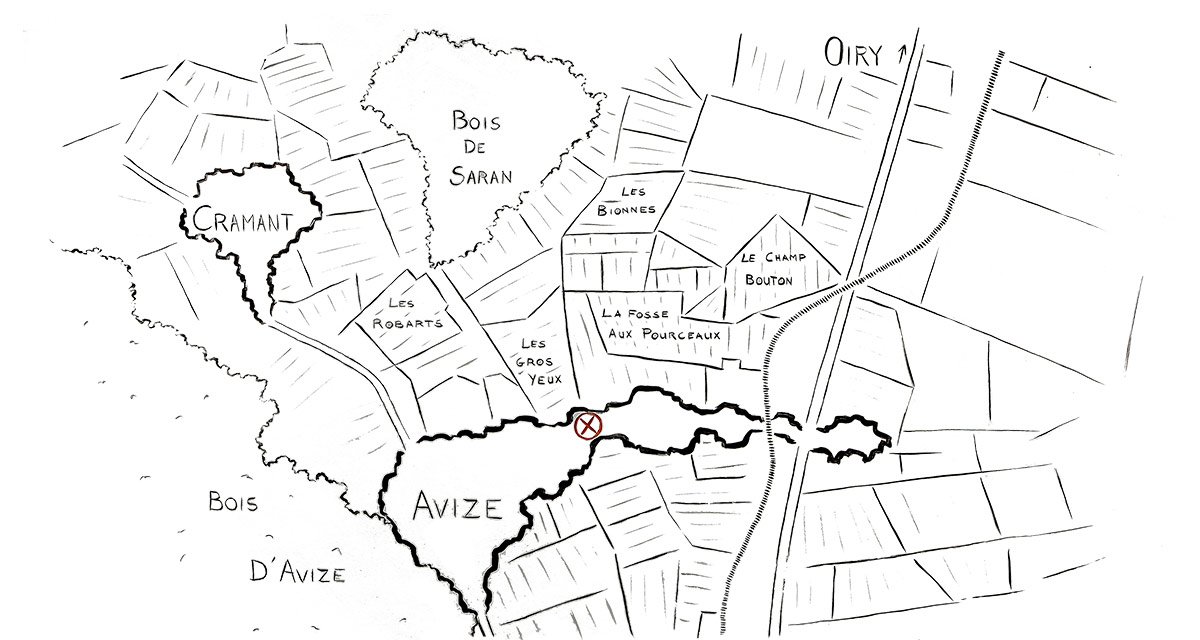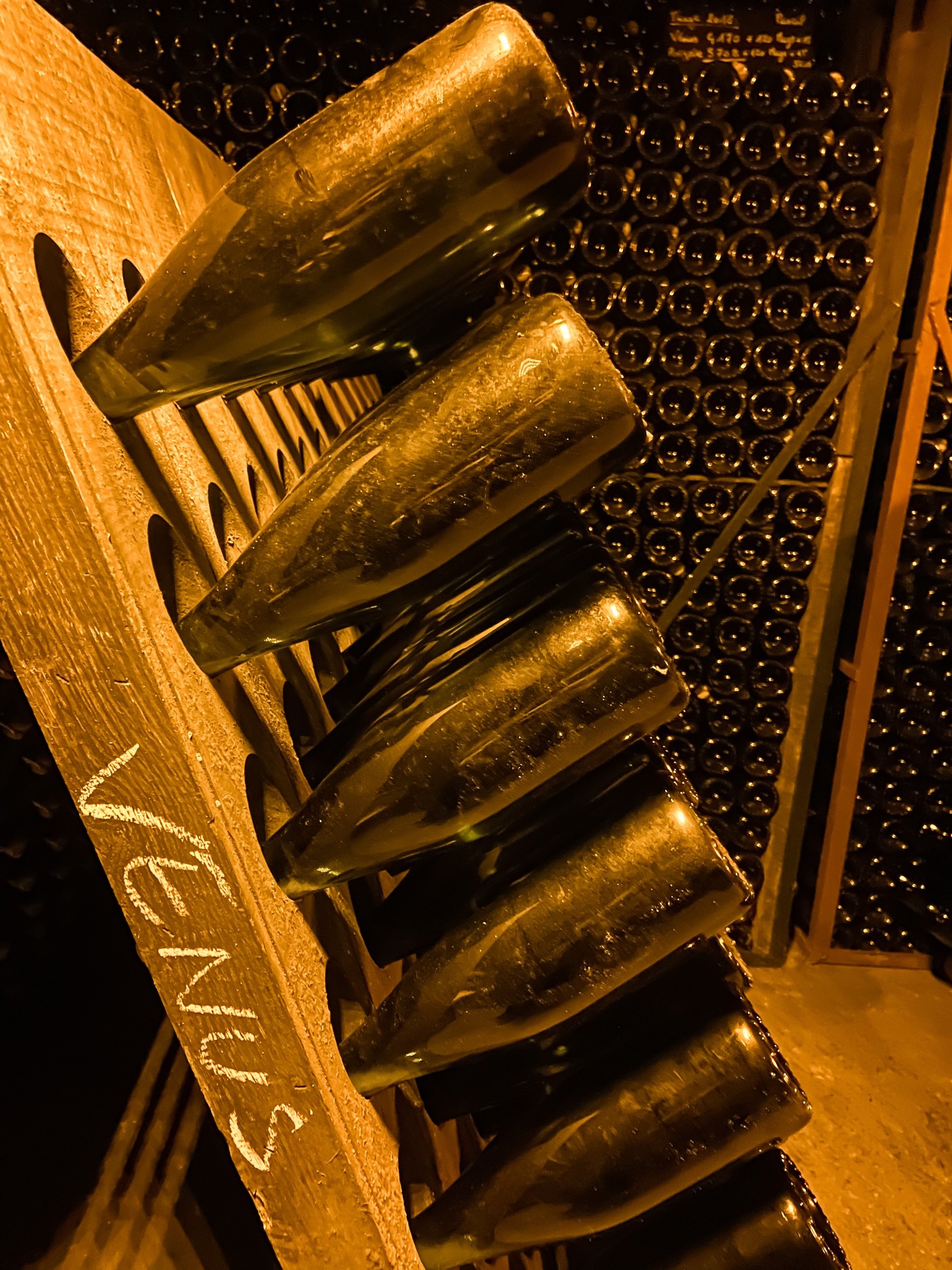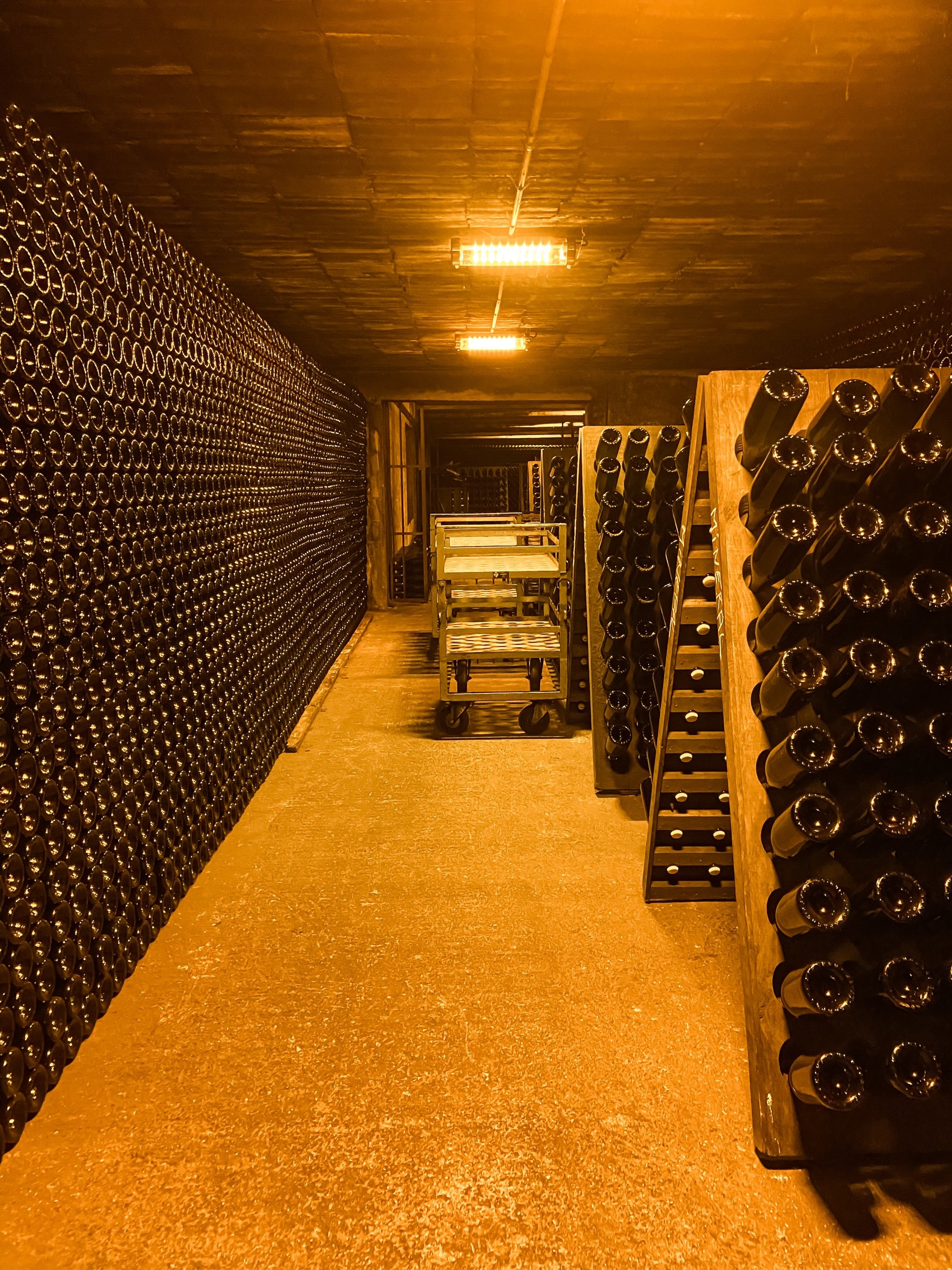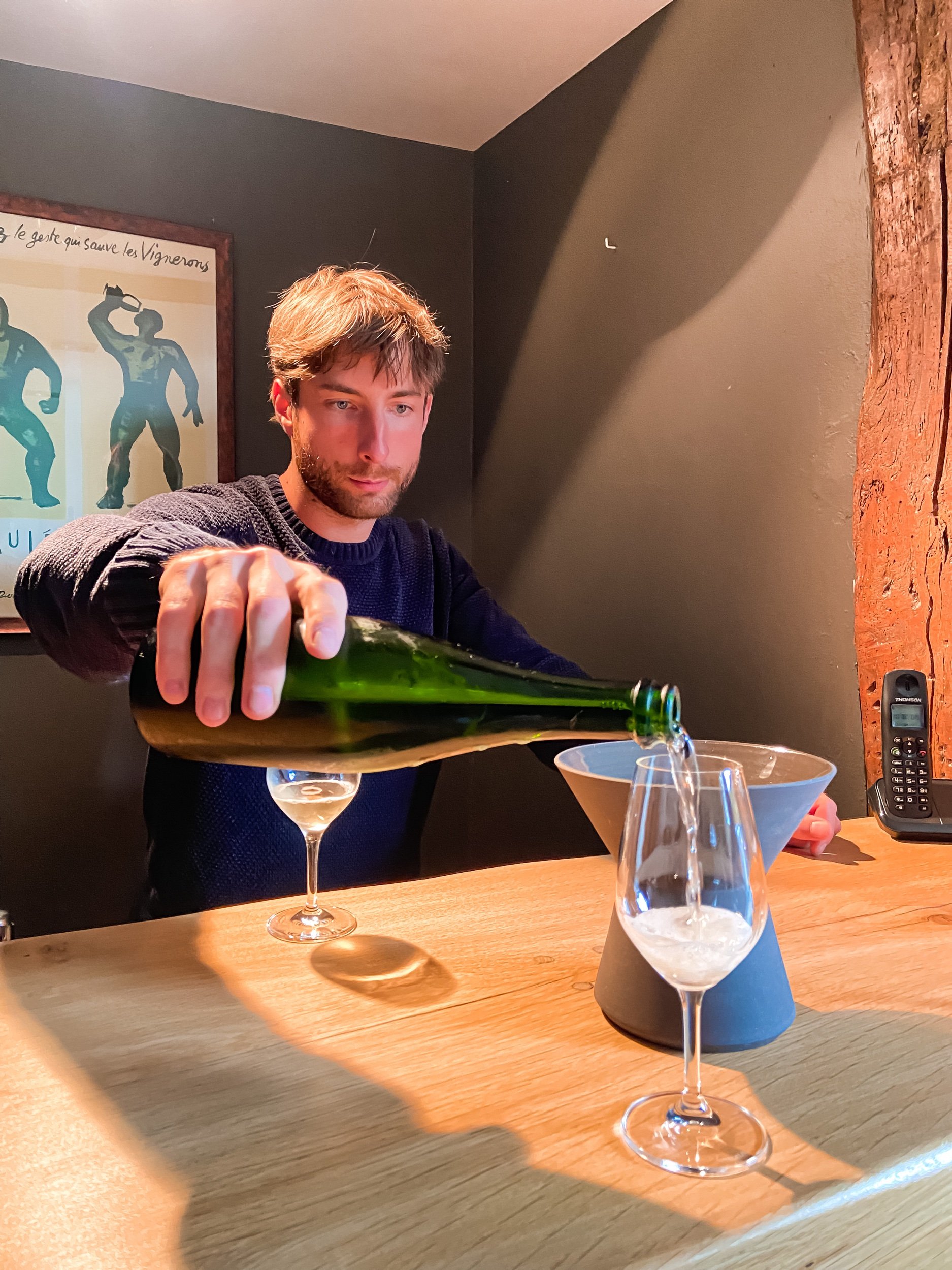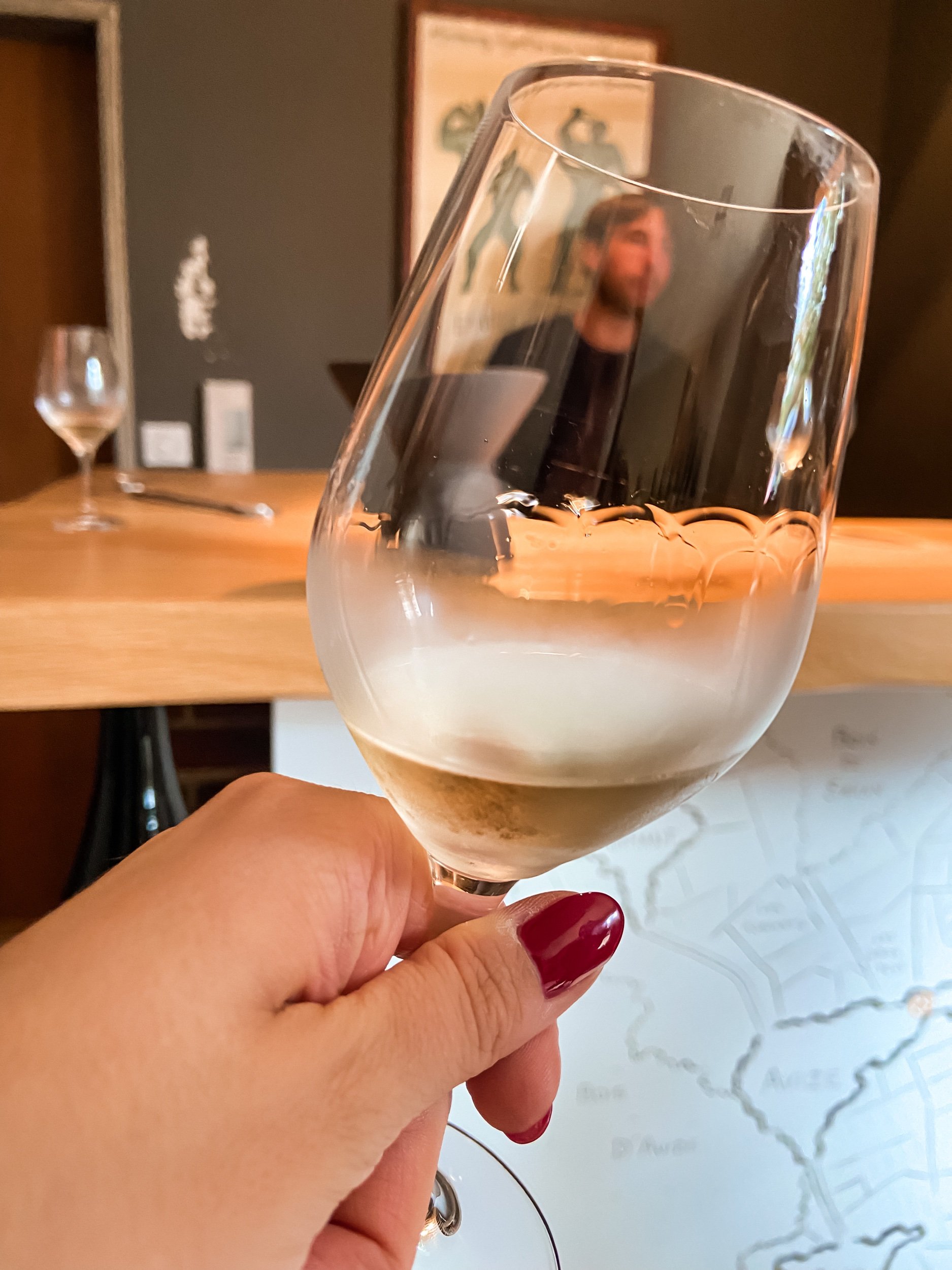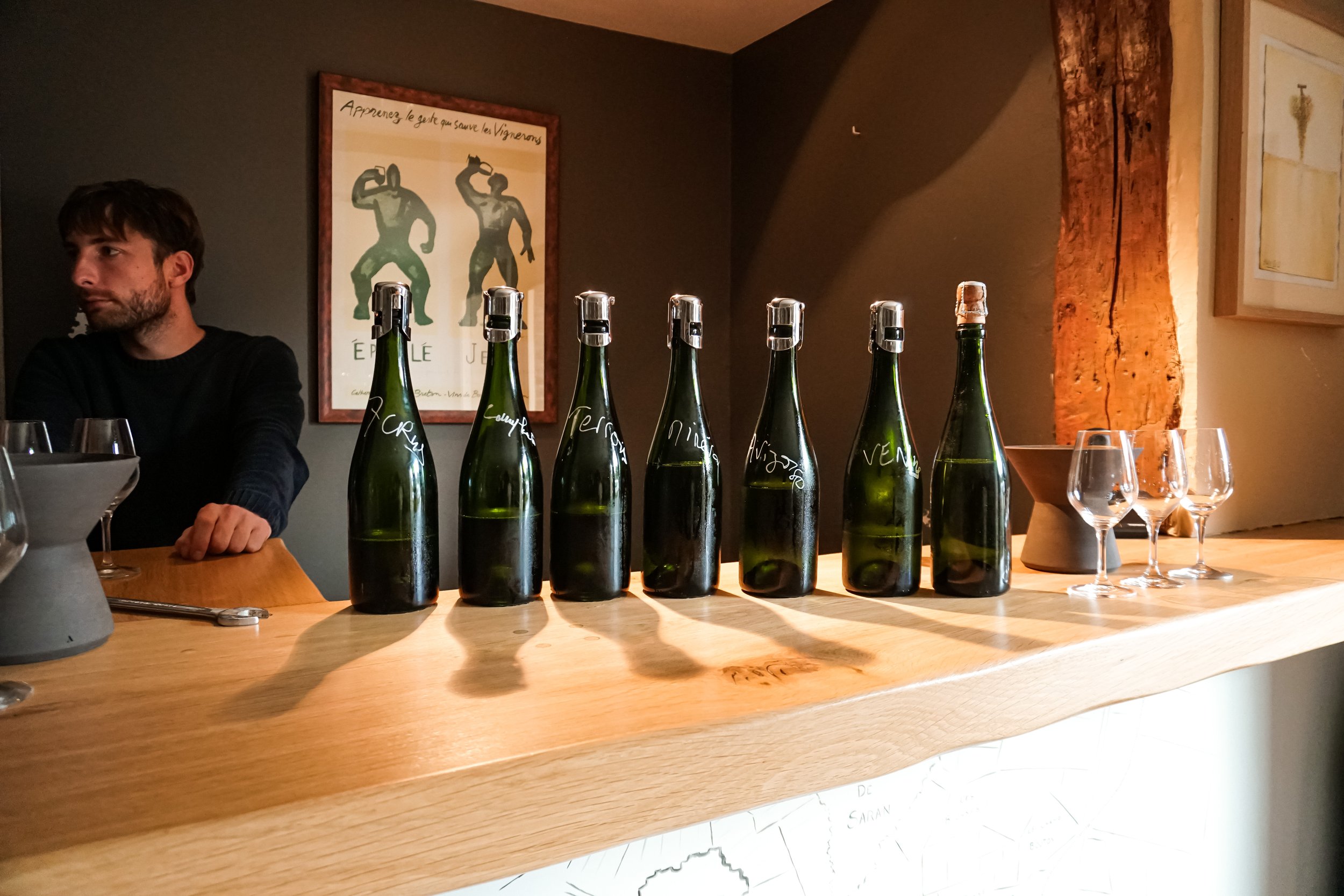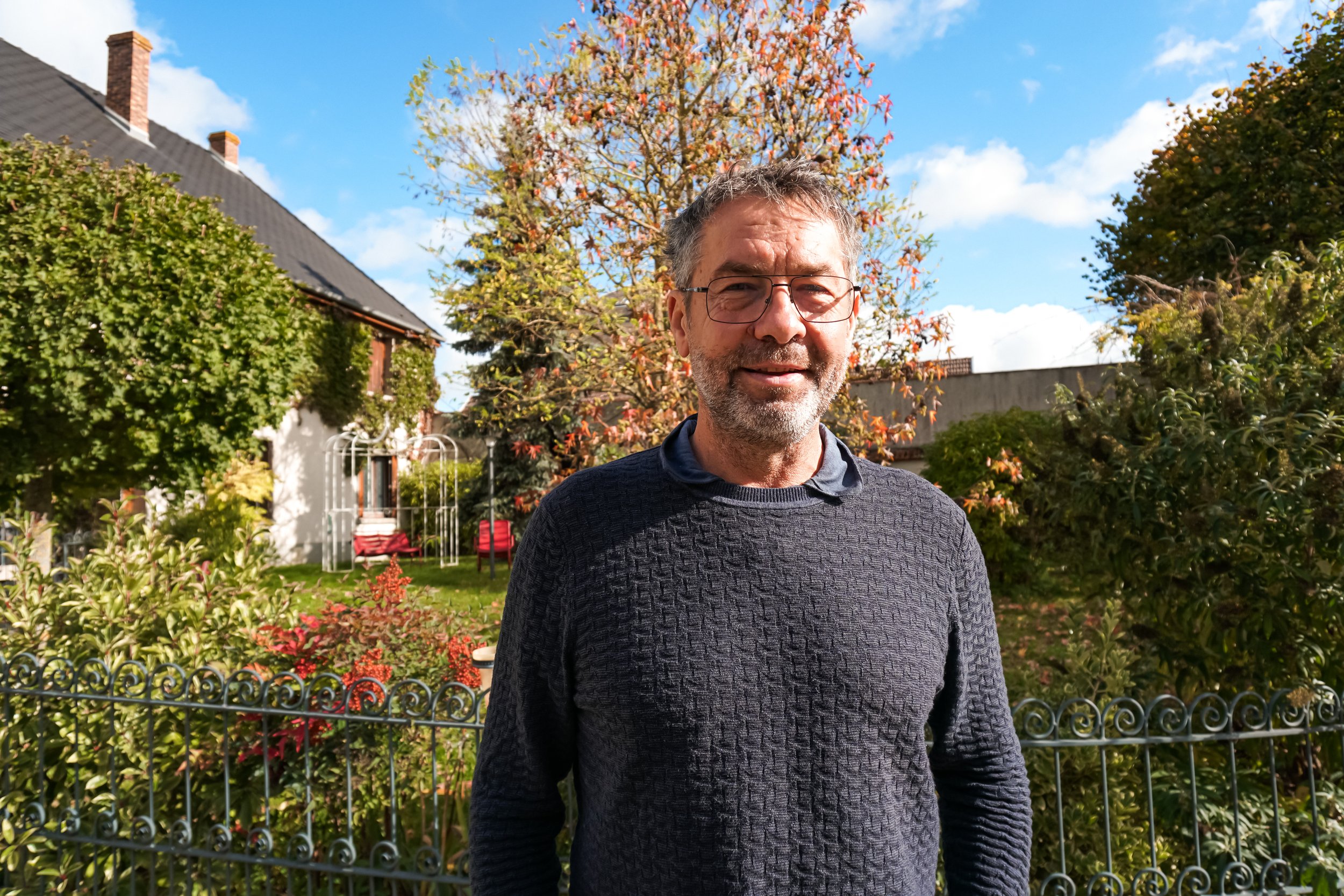Champagne. Agrapart
In the fall of 2022, I embarked on the mesmerizing journey to the heart of Champagne's Côte des Blancs and my first stop was an extraordinary domaine Champagne Pascal Agrapart. I found myself in Avize peering behind the curtain of one of the most captivating producers in the region. Agrapart, the esteemed grape grower and winemaker, holds steadfast to natural philosophy and refuses to purchase grapes from others. Vineyards spanning over 12 hectares, nestled in the prestigious Grand Cru villages, particularly Avize, are planted almost exclusively with Chardonnay. Their Champagnes are neither fined nor filtered and bottles are hand riddled.
Ambroise, son of Nathalie and Pascal Agrapart, greeted me at the estate and took me on a small tour through the cellars. These were very impressive – the sheer size of what is hidden in the basement could easily be twice as big as what stands on the ground. During the tour, Ambroise started to explain the philosophy of the domaine and the differences between each cuvée. The history of the estate begins in 1894 with Arthur Agrapart – great grandfather of Pascal. He, in return, took over in 1984 and quickly started to gain recognition among Champagne lovers.
Agrapart is located at the heart of the Avize village – therefore obviously working mostly with Chardonnay. In total, they are looking after 12 hectares which are spread within Côte de Blancs. The philosophy is to bring interventionism to the sheer minimum. The vineyards are cultivated organically though they are not certified. The soil is ploughed (also by horse called “Vénus” – hence the name of the prestige cuvée) and the composting occurs using natural ingredients. There is no fining or filtration. The production is small (around 90 000 bottles per vintage) – hence riddling is manual. All the vines are disgorged 2 months before being released. Vinification happens in wood with an average vine age being around 35 years. Traditional Coquart presses are used and malolactic fermentation is not blocked, which is the trend in the Champagne region.
There are 7 cuvées in total and I had the pleasure of tasting all of them:
7 Crus – Brut, two vintages from seven different villages (hence the name). Four of them are Grand Crus from Côte de Blancs. 90% Chardonnay and 10% Pinot Noir. The dosage is around 7 grams per litre. Up to 50% reserve wines.
My note: The wine had more body and density than the rest of the line up – no doubt because of the presence of Pinot Noir. It offers a nice mixture of citrus and flower notes brought together with a good creaminess on the palate and a great dosage balance.
Terroris – one of my favourites! Extra Brut, four Grand Crus from Côte de Blancs (Avize, Oger, Cramant and Oiry), two vintages blended together. The dosage of 5 grams per litre. Up to 50% reserve wines and one extra year (compared to 7 Crus) spent on the lees.
My note: Here I found the much leaner and very precise champagne – exactly what one would expect from Côte de Blancs. The saline note stayed ever present with crushed rock and chamomile aromas. Long finish and great presence on the palate with a piercing acidity. Amazing.
Complantée – Extra Brut mixture of 6 Champagne varieties (Chardonnay, Pinot Noir, Meunier, Arbane, Petit Meslier, Pinot Blanc). 5 grams per litre of dosage.
My note: An interesting mix of flavours and aromas. The red varieties lend towards small red berries but there is also a precision and salinity, all wrapped up with a great texture. This is a purist champagne – definitely not for everybody but made with great care and the usual precision.
Minéral – First of the vintage Champagnes – two parcels from Cramant and Avize blended together on a deep chalky soil. Disgorged, as usual, 2 months before release and the dosage is around 3 grams per litre.
My note: As the name suggests this champagne is all about minerality and precision. Which are being delivered in spades. Lemons, herbs and nutty flavours with amazing texture. The complexity and the purity is just amazing. Highly recommended.
Avizoise – Extra Brut vintage champagne exclusively from two parcels in Avize. The second fermentation occurs under a cork. Dosage is 3 grams per litre.
My note: The old vines (average age is 50 years) are really showing what they are capable of. The wine is rich and dense yet decidedly fresh and elegant on the palate. Brioche, nuts, honey. Great balance and precision. This will keep on aging and evolving further.
Vénus – Agrapart tête de cuvée – only around 3000 bottles per vintage. Vinified in demi – muid (600 litre, old), vintage champagne from a single vineyard (Fosse aux pourceaux) from Avize plowed exclusively with a horse. Same as Avizoise it is kept under cork for a second fermentation.
My note: Decisively the most “vinous” champagne from Agrapart. Rich and layered with flower aromas, lemon peel and something a little bit exotic. This is a multi-layered and complex wine which will gain even more in time. If you have it just wait for it.
Expérience – As Ambroise labelled the wine – this is the ultimate natural champagne – no additives whatsoever.
My note: Another “vinous” champagne – maybe a little bit more concentrated than Vénus but slightly less elegant, it is definitely more imposing on the palate. Green apple, lemon zest, chalk, almonds. It maintains a great freshness on the palate despite its broader shoulders. Very interesting!
Agrapart champagnes are concentrated and yet elegant with persistent finish and extreme purity. They embody quite simply the best Côte de Blancs has to offer and across the whole range the wines are just stunning. I can’t praise the Terroris enough which, still rather on a entry level, offers amazing quality and value. If you can get it somewhere do not hesitate!
I also had a very nice chat with Pascal at the end of our visit. First of all he was on his way to visit none other than Louis Benjamin Dagueneau to celebrate the anniversary of one of his famous vineyards – Le Jardins de Babylone – so his time was strictly limited but for a very good reason! I wanted to inquire what other wine regions he is interested in and without hesitation he told me he enjoys Piedmont very much. Exactly my type of taste! He mentioned enjoying Roagna very much together with Ambroise who mentioned that he believes that red Italian wines are second best in the world – yielding only to French red.
Of course my trip would have been incomplete without me asking about climate change and the challenges it poses to the grape growers. Firstly I asked Ambroise if he would consider changing the varieties in the future if they were allowed within the appelation to benefit from the warmer climate. He told me that they are historically attached to growing Chardonnay and currently he can’t imagine working with any other variety. Long story short – the things will stay the same chez Agrapart for the foreseeable future. And to the benefit of us all! Thank you Ambroise for the tour and the tasting, I hope to see you again soon!
